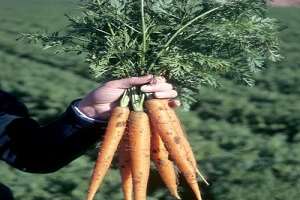By Gretchen Voyle

As fall begins, many smart gardeners are finishing up their garden harvest of vegetables and fruits. There are many vegetables and fruit that must be picked and dealt with almost immediately or they will lose quality, such as tomatoes, which must be eaten or processed. September begins the watch for that first frost. Warm season vegetables will not survive even a light frost because they get partially or totally frozen and decay begins almost immediately. Some of the garden goodies, however, are either not affected or enhanced by light frosts. Michigan State Extension offers the following suggestions on how to get more mileage out of your garden’s root crops and greens.
Root crops
Crops below the surface of the soil are not affected by frosts, but they are affected by freezing. As long as the soil is damp, they do well where they grow. If the soil is wet, they could rot. Root crops like carrots, turnips, beets, rutabagas and parsnips can remain in the garden after a frost and still be removed in good condition later, but get them dug and stored before the ground freezes.
Potatoes can also stay in the soil, but it is important they be dug and removed from the garden almost immediately and not left on the soil surface for any period of time. If potatoes remain on the soil surface in the sun, they start turning green. This is more than an annoying color; it is a chemical called solanine. It makes the potato bitter and, if enough is ingested, poisonous. It takes very little of this glycoalkaloid poison to cause gastrointestinal and neurological disorders. So dig and remove the potatoes to a dry, warm area out of the sun to begin the process of letting the skin toughen up for storage. Dry in a single layer and turn periodically. This takes about two weeks. Carefully remove soil, but do not wash the potatoes. You want less moisture, not more. The toughening of the skin is what will enable longer winter storage.